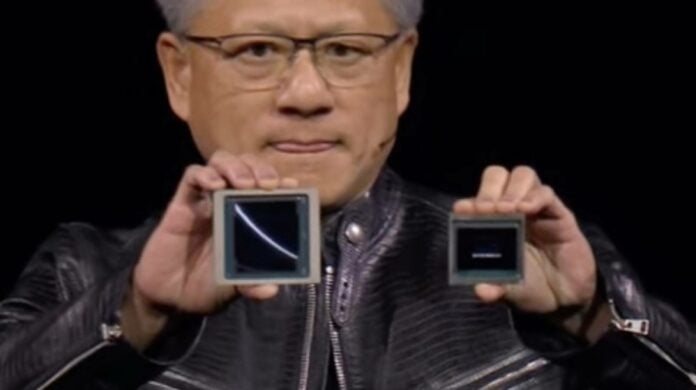Nvidia has asked SK hynix to accelerate its HBM4 chip development, preferably by half a year. The memory giant will try to make it happen, but nothing is sure.
According to SK Group chairman Chey Tae-won, via The Korea Economic Daily, Nvidia wants SK hynix to speed up the delivery of its latest and most advanced memory product ahead of the initial 2026 schedule. To be exact, Nvidia’s CEO Jensen Huang would like SK hynix to bring that date forward by six months.
“When I met Jensen Huang, he asked to bring forward the supply of HBM4 by six months,” said Chey. “And I looked at SK hynix CEO Kwak Noh-jung and asked if it’s possible. He said he will try his best [to meet the request].” Understandable, since Nvidia is one of, if not its biggest customer and HBM sales make up 30% of all SK’s DRAM revenue.
If the memory maker manages to pull this off, it would mean that the new 12-layer HBM4 chips would make it to the market less than a year after its 16-layer HBM3E came to market. The amount of layers indicates how many stacks of memory are packed inside a single chip.
While we don’t know the exact uplift brought by the new HBM4 memory, according to SK hynix CEO, the brand’s in-house simulations indicate that its 16-layer HBM3E products delivered 18% higher learning performance and 32% improvement in inference compared to 12-layer HBM3E chips. Thus, HBM4 may also bring a double-digit performance uplift for AI workloads.
Nvidia must be working on its next-generation Rubin GPUs which probably use HBM4 memory, hence the brand’s urgency in getting its hands on them sooner. HBM4 chips are expected to be available in four, eight, 12, and 16-layer designs, offering up to 64GB of capacity. The latter is expected in 2026.
JEDEC’s preliminary specifications set HBM4’s speed to 6.4GT/s using a 2048-bit bus, with each chip delivering 1.6TB/s of bandwidth. This means that a GPU with eight HBM4 chips – like the B200 – would have 12.8TB/s of bandwidth to run its tasks. For reference, the best gaming GPU currently available (RTX 4090) only carries 1TB/s of bandwidth, albeit not of the same type. But maybe one day, gamers will be able to witness the return of HBM memory inside their machines.

